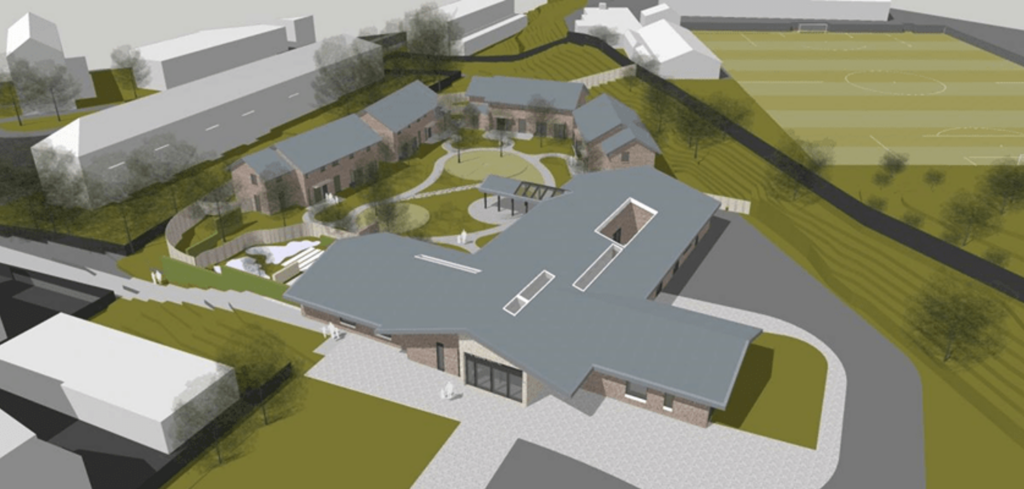The issue of transwomen in Scottish Prisons has caused chaos, fury and a political U-turn by the SNP in the last month over the cases of Tiffany Scott and Isla Bryson – two transwomen who were being processed as ‘women’ within the Scottish prison system.
A few voices have raised the possibility that these biological men might be gaming the system by adopting female or trans identities. The estranged wife of Bryson, Shonna Graham, dismissed her husband’s transition as a ‘sham’ and claimed Bryson was “bullsh***ing the authorities to avoid a men’s prison”.
Bryson began transitioning from male to female in 2020 – after being charged with two sex attacks.
No one has explored what the benefits of “bullsh***ing the authorities” in Scottish prisons might be. Why would any biological male go to such extreme lengths to avoid being housed in a men’s prison? Is the treatment of women in Scottish jails really so much more lenient that it might provide a felon with a ‘perverse incentive’ to change their gender identity?
When we hear that double rapist Isla Bryson was detained at Cornton Vale Women’s prison in Stirling, we assume this would involve barred and locked prison cells. But when we look into the reality of the prison system for women in Scotland we find that it has already been ‘gamed’ by progressives, creating much more attractive prisons for women, as well as shorter sentences.
A two-tier system between internment for men and women has come into existence during the last 15 years of SNP rule. It could be called a set of double standards, split down the sex divide. This is a system of ‘reform’ that affects female offenders only, and may explain why male prisoners want to identify as female. It’s because they’ll face a more comfortable stay behind bars, followed by an earlier release into the community.
This has come to light with the case of Katie Dolatowksi, a convicted serial child sex offender and self ID-ing transwoman. In 2018, Dolatowksi sexually assaulted a 10 year-old girl in a Kirkcaldy supermarket toilet and filmed a 12-year-old girl on the toilet at another supermarket. Dolatowksi violated his release terms in 2022 and, after violently assaulting an inmate at the male prison where he was being held, was moved to the all-female Cornton Vale, where inmates enjoy a degree of freedom that doesn’t exist in male prisons. It also has access to a community of female inmates.
Has the Scottish prison system created ‘perverse incentives’ for men to identity as women? How did that happen?
The Angiolini Report
It all began in 2012 after the ‘Commission for Women Offenders’ Report’ compiled by the former Lord Advocate, Dame Eilish Angiolini, claimed that Scotland’s criminal justice system needed a “radical reworking”. The Report made 37 proposals to improve the way women are treated in Scottish prisons. It called for the female-only prison at Cornton Vale to be demolished and replaced with a smaller prison and “smaller community-based units”.
Dame Eilish said: “For women who are repeatedly committing lower-level offences, we need to get better at tackling the root cause of their problems in the community, and allowing the community to benefit from the punishments imposed.”
Acting on the report, the then Justice Secretary Kenny MacAskill (now a member of the Alba Party) published his own report and in turn the Scottish Government’s policy became to reduce the number of women being sent to prison and to reshape the nature of internment for female offenders. These policy changes encouraged police to “issue conditional cautions and judges to impose combined custodial and community sentences”.
The focus moved to rehabilitation followed by release back into the community. Prison cells for the majority of women prisoners would be replaced by “Custodial Units for Women”.
When these plans were unveiled in 2016, Holyrood Magazine ran an article entitled: “They will not look like prisons: how community custodial units for women in Scotland will operate.”
At Cornton Vale – Scotland’s only national facility for women – five “community-based custodial units” were to be built, each able to hold up to 20 women. The then HM Prison Cornton Vale governor Rhona Hotchkiss told the Scottish Association for the Study of Offending in 2016, “These units will be in the community, they have to have minimal visible security… So they won’t have high walls, they won’t have barbed wire, they won’t have bars on the window, they will not look like prisons.”
Women will be held in “optimum security conditions for their individual needs, risks and strengths… with the majority of women in community-based custodial units serving short-term sentences”.
“Basically, what it will look like is a communal space with space for visiting experts and workers and so on, a nice visiting type area, and then the residential facilities which are as much like small flats as we can make them,” Hotchkiss said. “They’ll all be in small flatted units, they’ll all be cooking for themselves, they’ll be doing their own cleaning, their own washing, able to wander about, confined only within the perimeter of the building and only at the times that are appropriate to them.”
The slogan of the Scottish Prison Service is, un-ironically, “unlocking potential, transforming lives”.
The demolition work at the main building at Cornton Vale began in 2017, with the female prison population being rehoused in “Scotland’s first community-based custody units for women” in Glasgow and Dundee. “With the demolition of Cornton Vale under way,” then Justice Secretary Michael Matheson said, “there is no turning back on our plans for a smarter, more progressive approach to managing women in custody, ensuring they are prepared for life after release”.
The Scottish Prison Service aimed to have the new national facility at Cornton Vale and the two community units in Inverclyde and Dundee finished by the end of 2020. By 2023, the Bella Centre in Dundee was complete, offering “enhanced access to the community [and] will enable women to retain family ties while allowing supportive partnerships in the locality to flourish”. “This visionary new centre has been specifically designed to better prepare women for release and to reduce reoffending,” the brochure says.

The former Cornton Vale governor, Rhona Hotchkiss said this month that she would have refused to house transgender double-rapist Isla Bryson in her prison and described the decision as a “shambles”. But it’s clear that this was a shambles that was long in the making. It was only a matter of time before, not one but three transwomen gamed the Scottish prison system.
Foreseeable Outcomes
The more you trumpet your good intentions, the more it can backfire. In 2018, Cyrus Tata, Professor of Law and Criminal Justice at the University of Strathclyde, claimed the plans for women’s prisons “may simply make prison a more attractive place to send people”.
Canada learned from a similar liberalisation of women’s prisons project in the late 80s after it closed the country’s largest prison for women and redistributed women offenders throughout small regional facilities comparable to Scotland’s new Custodial Units.
However, the unintended consequences were dramatic. Then executive director of the Canadian Association of Elizabeth Fry Societies Kim Pate, said in 2016:
It was cast as one of the best reform initiatives internationally…They were talked about as being cottage-style, community-integrated, not having fences and staffing being really about providing support and therapeutic interventions.
Unfortunately, now, 26 years on, it’s been not a dismal failure but pretty darn close and we have now more than three times the number of women in prison.
The number of female prisoners in Canada did not shrink as intended. It increased from 203 in 1988 to 676 in 2014-15.
It has been widely known in Scotland through the many news reports on the BBC since 2012 that the SNP-led Scottish Government has been declaring itself a progressive champion of female prison reform. It is also common knowledge that you serve your time with a lot more freedom in Scottish prisons if you’re a woman, that your sentence might be commuted to community service and you can have access to the outside community while you are inside. It doesn’t take genius to see how this new system provides an incentive for male prisoners to identify as female and the trouble likely to arise when you make it easier for people to self-ID, as the Scottish Gender Recognition Reform Bill will do, reducing the time it takes to change sex from two years to a few months.
In the U.K., according to government statistics, it takes an average of 357 days for a case to reach the Crown Court, plenty of time to consider which gender you’d like to be tried under and to calculate whether you’d prefer to be interred in an all-male prison wing in a barred cell or within a newly designed Community Custodial Unit, able to walk about by yourself, to cook for yourself, and with a “nice visiting type area”.
There is growing evidence of biological men taking advantage of the changing cultural climate to game the system by self-identifying as women in other areas, not just the Scottish criminal justice system. Consider ‘Transmaxxing’, in which Incels have recently decided to ‘join the enemy’ and transition to becoming female. Admittedly, it’s a drastic measure for a young man having difficulty finding a female sexual partner, but they believe that generations of feminism have made the playing field unequal and young men are now second class citizens. Why not “become a woman”, they ask in their 73-page transmaxxing manifesto. They believe “the male gender role is broken” and that as a transitioned woman you are “less likely to get killed”, get “cheaper car insurance” and are able to “extract resources from males” and enjoy “access to female spaces”. One transmaxxer even claims swapping gender would give him a “professional advantage, priority access to mentorship programs, increased visibility and celebration of my work (even if mediocre), favourable bias during the performance review and promotion process, protection from layoffs for the sake of promoting DEI and avoiding lawsuits”.
Transmaxxers have not experienced gender dysphoria and are openly doing this to game a system they hate. They see it as a form of ironic revenge because they believe feminists gamed the system in the generations before to benefit women.
If young Incels can go to such lengths, why wouldn’t male convicts facing long, arduous and dangerous prison sentences do the same?
As former Cornton Vale Governor Rhona Hotchkiss says: “If you can get a Gender Recognition Certificate within three months, lots of male prisoners will do it.”
Jane Dough is the nom de plume of a Scottish writer.











To join in with the discussion please make a donation to The Daily Sceptic.
Profanity and abuse will be removed and may lead to a permanent ban.